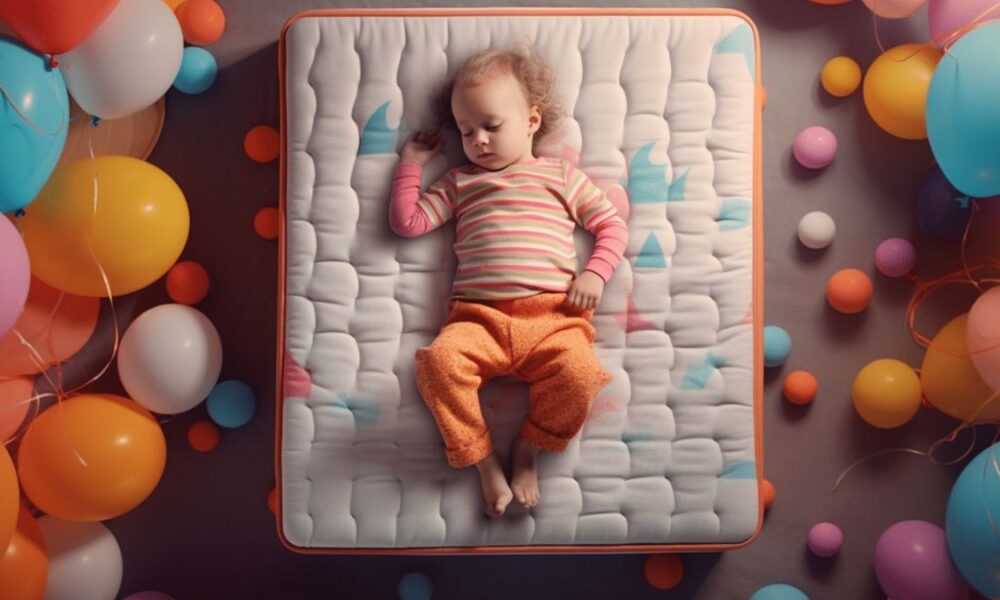Selecting a mattress for your little one might seem like a straightforward task. After all, we tend to focus more on big-ticket parenting decisions—education, nutrition, and extracurricular activities—while allowing smaller choices, like a mattress, to take a backseat. But here’s the truth many parents overlook: the type of mattress your child sleeps on can have a significant impact on their development, health, and overall well-being.
If you’re baffled by what type of mattress to get for your child, don’t worry—you’re not alone. Most parents choose based on price tag or brand, missing the factors that actually matter. This blog breaks down some common misconceptions about picking a kid’s mattress, explains what to look for, and helps you make an informed choice.
Why Your Child’s Mattress Matters
It’s tempting to treat the mattress as “just a surface to sleep on,” but science and pediatric experts disagree. Kids spend a third of their day sleeping, which means the quality of their mattress directly influences their development and health.
Here’s why it matters:
- Spinal Alignment: A growing body needs proper support. The wrong mattress can disrupt spinal alignment, potentially affecting posture and growth over time.
- Sleep Quality: Children require 9–12 hours of sleep per night, depending on their age. A subpar mattress can lead to poor sleep quality, impacting focus, mood, and even their immune system.
- Allergies and Skin Sensitivities: Many mattresses trap allergens like dust mites, which may aggravate allergies or cause skin irritation for children with sensitive skin.
Clearly, the stakes are higher than most parents realize. A child’s mattress is an investment in their health—not just a piece of bedroom furniture.
Common Mistakes Parents Make
Despite the importance of a good mattress, many parents fall into the same traps. Here are three common mistakes:
1. Choosing Price Over Quality
It’s natural to want to save money where possible, but focusing solely on the cheapest option often backfires. Cheaper mattresses might seem like a good idea for kids who’ll “outgrow” them, but low-quality materials wear out quickly, and poor support can lead to restless nights and discomfort.
2. Buying Too Soft or Too Firm
Adults tend to choose mattresses based on their personal comfort preferences—plush or firm—but kids are different. Their bodies need a mattress that provides just the right combination of support and softness. Too firm, and it won’t contour to their body; too soft, and their spine won’t stay aligned.
3. Not Considering Allergies
Most parents don’t think about hypoallergenic materials when buying a child’s mattress, but this should be a top priority. Mattresses that trap dust, mold, or bacteria can wreak havoc on kids who are already prone to allergies or asthma.
4. Ignoring Growth Spurts
Your toddler won’t stay pint-sized forever (even if you wish they would). Buying an overly small mattress might mean another purchase within a year or two. It’s worth considering your child’s growth when selecting the size—and if they’ll soon graduate from a crib to a big-kid bed.
What to Look for in a Children’s Mattress
Now that we’ve covered the mistakes, here are six things to prioritize when choosing the perfect mattress for your child.
1. Proper Size
Start with the basics. Transitioning from a crib? A twin mattress is common for young children, but growing kids may benefit from a twin XL or full, giving them room to stretch out as they age. Try to think ahead about how long you want this mattress to last.
2. Support and Comfort
The best mattress strikes a balance between firmness and comfort. Look for a medium-firm mattress that cradles your child’s body while keeping their spine supported. Foam or innerspring mattresses are often good bets, but it depends on your child’s sleeping position—back, side, or stomach.
3. Breathable and Hypoallergenic Materials
Opt for materials designed to reduce allergen buildup. Natural latex, organic cotton, and wool are great choices for sensitive kids. Additionally, breathable materials help regulate temperature, preventing night sweats.
4. Durability
You don’t want to replace this mattress every few years, so durability is key. Test the build and materials to ensure they’ll stand the test of time—not just your child’s jumping-on-the-bed sessions.
5. Certifications
Pay attention to certifications like CertiPUR-US® or OEKO-TEX®, which ensure the mattress is free from harmful chemicals and substances. These certifications are especially important for ensuring your child sleeps in a toxin-free environment.
6. Edge Support
Kids are prone to rolling around in their sleep or sitting on the edge of the bed. Mattresses with reinforced edges can handle the wear and tear of constant movement and provide greater safety.
Tips for a Seamless Mattress Transition
If your child is moving from a crib to their first bed, or swapping out their current mattress for a new one, the transition can sometimes be tricky. Here’s how to make it easier:
- Get Them Excited: Have your child help pick out their bed or sheets so they feel involved and excited about their new sleep space.
- Start with Familiar Items: If possible, use the same bedding or stuffed animals they’re used to—it’ll create a sense of familiarity.
- Adjust Gradually: If the mattress feels different from their old one, allow time for adjustment. Remind them that new things can take time to feel “just right.”
Are Expensive Mattresses Worth It for Kids?
One of the biggest questions parents face is whether premium mattresses are worth the cost. The answer? It depends. While you don’t have to spend a fortune, investing in a high-quality mattress pays off in the long run. The right choice will last years, improve your child’s sleep quality, and even benefit their health.
Consider premium features and materials if your budget allows—it’s a long-term investment in their well-being. And as always, research reviews and test options in-store (or take advantage of trial periods for online retailers).
Think Beyond the Mattress
Don’t forget that a mattress is only one piece of the sleep puzzle. To create the ultimate sleep environment:
- Add a mattress protector to guard against accidents or spills.
- Choose breathable, soft bedding that complements the mattress.
- Consider blackout curtains, white noise machines, or nightlights if your child has trouble falling asleep.
Sweet Dreams Start With a Thoughtful Choice
Your child deserves the best possible start to each day—and it begins with restful sleep. By avoiding common mistakes, understanding how to choose the right mattress, and prioritizing their unique needs, you can transform their nights and set them up for success.
Not sure where to start? Visit your local bedding store or explore our curated list of kid-friendly mattresses for recommendations. Sweet dreams await!










